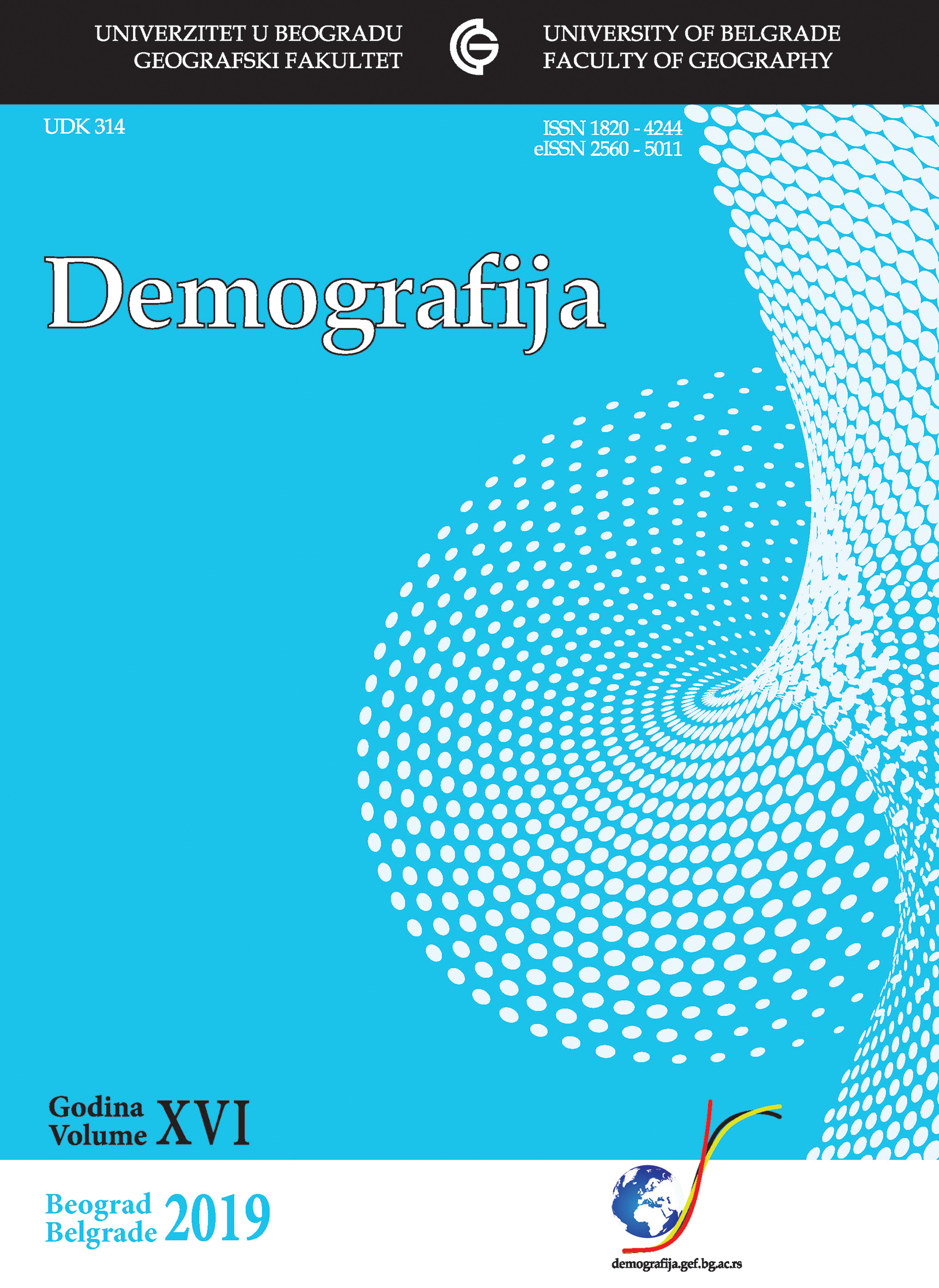Problemi proizvodnje prostora i socio-prostornog razvoja ruralnih naselja Grada Zaječara
The Problem of Production of Space and Socio-Spatial Development of the Rural Settlements of the City of Zaječar
Author(s): Vesna Miletić-Stepanović, Vladimir PopovićSubject(s): Social Sciences, Geography, Regional studies, Regional Geography, Applied Geography, Social development, Rural and urban sociology, Economic development
Published by: Географски факултет, Универзитет у Београду
Keywords: socio-spatial development;social space;the City of Zaječar;functional organization;quality of life;
Summary/Abstract: In this paper is researched connectivity of social space characteristics, demographic specificities and functional integration of Planinica, Lenovac and Lasovo into the network of settlements of the City of Zaječar. This paper is based on the hypothesis that social exclusion of rural settlements Planinica, Lenovac and Lasovo has produced specific social space, characterized by presence of demographic problems and problems with functional connections of these settlements, which led to a collapse of socio-spatial development and produced very low life quality level of families and households of the examined rural settlements. By using comparative method, a group of rural settlements from the sample in unfavorable social, demographic and functional position are compared with a control group of settlements in favorable position – Glogovica, Dubočane and Velika Jasikova. The comparison is made using two groups of indicators: demographic (number of inhabitants and indexes of its change, number of households and indexes of its change, average number of inhabitants per household) and life quality (percentages of beneficiaries of social assistance, percentages of dole and soup kitchen users in total population). As data sources were used census data of the Statistical Office of the Republic of Serbia in periods 1991/2002. and 2002/2011. year, and data of the Department of Social Service of Zaječar from the year 2019. Also, the demographic size of settlements according to the latest Population Census (from 2011), number of beneficiaries of social assistance, beneficiaries of dole and soup kitchen service from 2019 were taken onto analysis. In that matter was tested adequacy and possibility of application of the model of community of settlements that is proposed in the actual Spatial plan of the City of Zaječar, and which represents an official approach to organization and integration of primary rural settlements in wider local and regional area. Theoretically, the analysis is based on the concept of semi-periphery of the world’s capitalist system. In that context, the whole territory of the City of Zaječar is located in double periphery - periphery of the world's capitalism and in marginalized region of the Eastern Serbia, as one of the most undeveloped parts of the Republic of Serbia. Multiplicated unfavorable position is even worse in the excluded rural settlements and generates social and demographic development differences, primarily by the market pressure boosting and dictation of flexible capital accumulation, which produces poverty raise, social inequalities, population crises – „surplus people“, reduced social protection and raise of social unsteadiness. Within results expose were compared social space characteristics of examined, disintegrated rural settlements and control, integrated rural settlements. Segregated settlements in the southern part of the City are not included in development plans of wider situations, and this part of the City is characterized by subordination, heteronomy and institutional invisibility. The northern part, including the control settlements, is included in processes of private-public partnerships with goal to improve development of rural settlements and raise life quality to the European level (Austrian and German development models). The results show homologous reciprocally connection between social and demographic changes and development and position and the role of settlements in the hierarchy system. Actuality and applicability of this research is in possibility to develop social space of the southern part of this territory and include and integrate it in social changes by changes in functional organization, which would raise quality of life of their inhabitants. In this paper are also given cartographic illustrations of the state before and after the corrections which operationalizes and cartographically presents apropose of development changes in modeling of tne network of settlements of the City. Potential of proposed changes refer to reduction of social and demographic contrarities and disbalances, favorable socio-spatial integration and cohesion of social space of the City of Zaječar and improvment of life quality of people from researched„old mans“ rural settlements.
Journal: Demografija
- Issue Year: 2019
- Issue No: 16
- Page Range: 77-101
- Page Count: 25
- Language: Serbian

